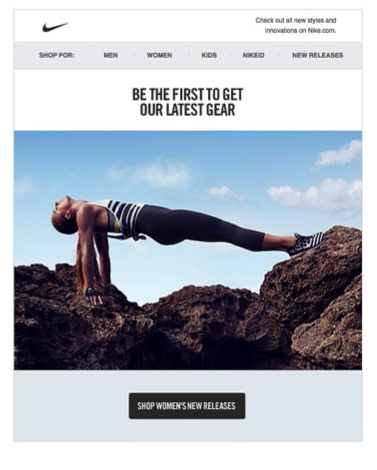Retailers are always on the hunt for better ways to grab the attention of their customers. Blanketing an email subscriber list with a one-size-fits-all coupon isn’t really enough anymore. Dynamic content — content that changes based on the demographics or preferences of your subscribers — is helping retailers get customers in the door (or items in the online shopping cart). When done correctly, dynamic content leaves recipients wowed by the way your brand knows exactly what they want to buy.
However, dynamic content doesn’t just deliver a quick sale. It offers retailers the keys to the kingdom when it comes to building long-term customer relationships. Here are four quick reasons why retailers should cozy up to a dynamic content strategy:
1. It helps stanch the flow of lost subscribers: Here’s a not-so-fun-fact: the average email list churns by about 30 percent every year. That means you’ll lose one out of every three of your current subscribers in the next 12 months. And since 56 percent of people unsubscribe from emails due to content that’s no longer relevant, personalized content is a modern marketer’s most timesaving and effective weapon in fighting the battle against subscriber attrition.
Dynamic content takes personalization to a whole new level, allowing marketers to target individual subscribers with different content — all from a single email. It’s also incredibly diverse. Uses range from simply inserting your subscriber’s name into a subject line to switching out images and full copy according to purchase history or interests. The more personalized the content, the more effective the message and the less likely your customers are to click “unsubscribe.”
2. It makes your customers feel special: When you give someone a gift, it’s nice to give it a personal touch, right? Showing how well you know someone is part of expressing the importance of your relationship. Well, the same could be said for dynamic content. It provides a personal touch to your communications, and insight into each customer’s specific interests and content needs.
It’s easy, too. Marketers can target individual subscribers with different content even when they’re on the same mailing list. Nike used a dynamic content approach in the below email — the image and copy changed depending on whether it was targeted to a male or female customer.
In another example, our client, School of Rock, sent emails with images that corresponded to their subscribers’ musical interests. During the sign-up process, School of Rock captured data on which instruments each user plays. When the school sends an invitation for summer programs, percussionists see an image of someone playing the drums, pianists see someone playing keyboards, and aspiring vocalists are served an image of a singer.
Without dynamic content, this email strategy would be complicated and time consuming. With some simple copy and pasting of code, the School of Rock marketing team can create a customized experience that’s relatable and invites engagement. The result? Every email subscriber feels like the organization understands their interests, creating a feeling of community and common ground between the musician and the brand.
3. It delivers big results in just a little time: Simply put, dynamic content works. Dynamic content can improve click-to-open rates by as much as 73 percent. And if you want to see the impact in dollars and cents, consider this: Personalized promotional emails lift transaction rates and revenue six times higher than nonpersonalized emails, according to Experian.
You simply can’t argue with the numbers: a 14 percent improvement in clickthrough rates and a 10 percent increase in conversions could be game changers for some brands.
4. It’s really, really easy: We know retailers are busy, so we saved the best news for last: dynamic content is really, really easy to deploy.
First, it’s incredibly adaptable. It works with whatever data fields you’re capturing from your audience, whether that’s location, purchase history or spirit animal (sea otter, since you asked). It’s also easily trained. It only displays the content you tell it to in response to the data fields you assign.
Integrating email marketing software with other marketing and CRM tools like Shopify, Eventbrite, Salesforce and Formstack is a low-effort strategy that creates an endless stream of customer data for you to use. If you have information on your customers’ interests, locations and past purchases, why not tailor the best message possible for them? If you’re not, you’re missing out on revenue – 40 percent of consumers buy more from retailers who personalize the shopping experience across channels.
Christopher Lester is the vice president of sales at Emma, an email marketing software provider. For more tips on dynamic content and other modern marketing must-haves, download our Field Guide.











